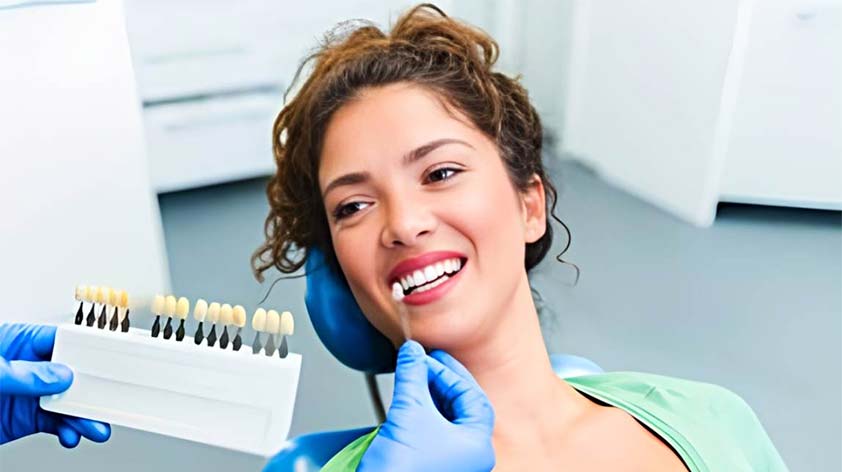
What Are Immediate Loading Dental Implants? Immediate loading dental implants are a revolutionary advancement in dental implant technology.
Unlike traditional implants that require a waiting period before the final crown is attached, immediate loading implants allow the placement of a temporary crown at the same time the implant is inserted.
The Traditional Approach vs. Immediate Loading
Traditional dental implants have been a trusted method for many years. This process usually involves placing the implant into the jawbone and allowing it to heal and integrate with the bone over a period of three to six months. Only after this healing period can the permanent crown be attached.
Traditional Implants:
-
Longer Process: The healing phase means multiple visits and a longer overall treatment time.
-
Healing Required: Patients must wait for osseointegration – the process where the bone grows around the implant – before the crown can be placed.
-
High Success Rate: With years of proven success, traditional implants are a reliable option.
Immediate Loading Implants:
-
Quicker Results: Immediate placement of a temporary crown means you get a functional and aesthetic solution right away.
-
Convenience: Fewer appointments are needed, which is perfect for busy professionals or those with limited time.
-
Patient Satisfaction: Immediate results lead to higher patient satisfaction, especially for those self-conscious about missing teeth.
Benefits of Immediate Loading Dental Implants
Instant Gratification and Confidence Boost
One of the most significant benefits of immediate loading dental implants is the instant gratification it provides
Enhanced Aesthetics and Functionality
Immediate loading implants offer both aesthetic and functional benefits. The temporary crown placed during the initial procedure looks and feels like a natural tooth. There’s no awkward waiting period with gaps or ill-fitting temporary solutions. The implant integrates seamlessly with the patient’s natural teeth, restoring not just their smile but their ability to chew and speak with ease.
Convenience and Time Efficiency
For busy professionals or those with limited time, the convenience of immediate loading implants is unbeatable. Traditional implants require multiple visits over several months. In contrast, immediate loading implants streamline the process into just a couple of appointments.
Immediate Psychological Benefits
There’s a certain psychological comfort that comes with immediate loading implants. Patients who receive their implants in a single visit often report feeling less anxious and more satisfied with their treatment. The quick turnaround helps to minimize the emotional and social discomfort that can accompany missing teeth.
Patient Satisfaction and Comfort
Patients who opt for immediate loading implants often express higher levels of satisfaction. They appreciate the immediate results and the natural feel of their new teeth.
Indications and Patient Selection for Immediate Loading Dental Implants
Criteria for Choosing the Right Patients
Selecting the ideal candidates for immediate loading dental implants is both an art and a science. A successful outcome hinges on careful evaluation and selection of patients who meet specific criteria.
Adequate Bone Density and Volume
One of the key criteria is the patient’s bone quality. Adequate bone density and volume are essential to support the implant immediately.
Healthy Gums and Oral Hygiene
Healthy gums and good oral hygiene are non-negotiable. Patients must have healthy periodontal tissues to avoid complications.
Good Overall Health
Patients should be in good overall health, with no uncontrolled systemic conditions such as diabetes or autoimmune disorders that could impair healing.
Non-Smokers or Commitment to Quit
Smoking can significantly impair healing and increase the risk of implant failure. Non-smokers are ideal candidates, but if a patient smokes, they must be willing to quit before and after the procedure to ensure the best possible outcome.
Patient Compliance and Commitment
Patient compliance with post-operative care and follow-up visits is crucial.
Contraindications for Immediate Loading Implants
While immediate loading dental implants offer numerous benefits, they are not suitable for everyone. Understanding the contraindications helps avoid complications and ensures the success of the treatment.
Insufficient Bone Density
Patients with insufficient bone density or volume are not good candidates for immediate loading implants. Without adequate support, the implant is at risk of failing. Bone grafting or other preparatory procedures might be necessary first.
Poor Oral Hygiene and Gum Disease
Poor oral hygiene or existing gum disease can jeopardize the success of the implant. Infections or inflammations around the implant site can lead to complications and failure.
Uncontrolled Systemic Conditions
Patients with uncontrolled systemic conditions, such as diabetes or autoimmune diseases, have a higher risk of poor healing and implant failure. These conditions need to be well-managed before considering immediate loading implants.
Heavy Smokers
Heavy smokers face a higher risk of complications and implant failure due to impaired healing.
Course Overview: Immediate Loading Dental Implants
Objectives of the Course
Embarking on a dental implant course focused on immediate loading is like opening a new chapter in your professional journey. The primary objectives are clear and focused:
- Mastery of Techniques: Equip you with the skills to perform immediate loading dental implants with confidence and precision.
- Patient Selection: Teach you how to identify ideal candidates for the procedure, ensuring high success rates and patient satisfaction.
- Post-Operative Care: Provide insights into effective patient management and aftercare, which are crucial for long-term success.
- Latest Advancements: Keep you updated with the latest technological advancements and research in implantology.
Curriculum and Modules Covered
The curriculum is meticulously designed to cover every aspect of immediate loading dental implants. Each module builds on the previous one, ensuring a comprehensive understanding and skill set by the end of the course.
Module 1: Introduction to Immediate Loading
- Overview of Immediate Loading: Understand the basics and history.
- Advantages Over Traditional Methods: Learn why immediate loading is gaining popularity.
- Case Studies: Review successful cases and learn from real-world examples.
Module 2: Patient Assessment and Selection
- Criteria for Selection: Dive into the specifics of what makes a good candidate.
- Contraindications: Identify potential red flags and avoid complications.
- Practical Sessions: Engage in hands-on assessments with live models.
Module 3: Surgical Techniques and Procedures
- Step-by-Step Guide: Detailed instructions on the surgical process.
- Tools and Equipment: Familiarize yourself with the necessary instruments.
- Live Demonstrations: Watch live surgeries and gain practical insights.
Module 4: Prosthetic Considerations
- Temporary vs. Permanent Crowns: Learn the differences and best practices.
- Aesthetic Considerations: Ensure the implants look natural and appealing.
- Patient Comfort: Techniques to maximize patient comfort during and after the procedure.
Module 5: Post-Operative Care and Management
- Follow-Up Protocols: Establish effective follow-up routines.
- Managing Complications: Learn how to handle any issues that may arise.
- Patient Education: Equip your patients with the knowledge to care for their new implants.
Module 6: Advanced Techniques and Innovations
- Cutting-Edge Technology: Explore the latest advancements in implant technology.
- Future Trends: Stay ahead of the curve with insights into future developments.
- Interactive Workshops: Participate in workshops that challenge and expand your skills.
Hands-On Training in Immediate Loading Dental Implants
The Importance of Practical Experience
In the world of dentistry, nothing beats the value of hands-on training. Theory and lectures are essential, but the true mastery of immediate loading dental implants comes from getting your hands dirty—literally.
Types of Hands-On Exercises
A well-rounded dental implant course incorporates a variety of hands-on exercises designed to build confidence and competence.
1. Simulated Models and Mannequins
Before working on live patients, practicing on simulated models and mannequins is crucial. These lifelike models provide a safe environment to hone your skills.
2. Cadaver Training
For a more realistic experience, cadaver training is invaluable. It provides a closer approximation to actual human tissue, helping you understand the nuances of implant placement in real bone.
3. Live Patient Sessions
Nothing compares to the experience of working on live patients under expert supervision. These sessions are the pinnacle of hands-on training.
4. Collaborative Workshops
Interactive workshops with peers and mentors foster a collaborative learning environment. You can exchange insights, ask questions, and receive instant feedback.
5. Virtual Reality Simulations
Some advanced courses incorporate virtual reality (VR) simulations, providing an immersive experience where you can practice implant placements in a controlled, virtual environment.
Advanced Technologies in Implantology
Latest Tools and Technologies Used
The field of implantology is evolving rapidly, thanks to cutting-edge tools and technologies that enhance precision, efficiency, and patient outcomes. Let’s explore some of the latest advancements that are transforming dental implant procedures.
3D Imaging and CBCT Scanners
3D imaging and Cone Beam Computed Tomography (CBCT) scanners have revolutionized the way we approach dental implants.
Guided Implant Surgery
Guided implant surgery uses computer-generated templates based on CBCT scans. These guides ensure that implants are placed in the optimal position, angle, and depth, minimizing the margin for error and reducing surgery time.
CAD/CAM Technology
Computer-Aided Design (CAD) and Computer-Aided Manufacturing (CAM) technologies allow for the creation of custom prosthetics with unmatched precision.
Laser Dentistry
Laser technology in implantology offers minimally invasive options for soft tissue management, bone contouring, and even implant placement.
Integration of Digital Dentistry in Training
Digital dentistry is not just transforming clinical practices but also the way we train future dental professionals. A comprehensive dental implant course now integrates digital tools and technologies to enhance learning and skill development.
Virtual Reality Simulations
Virtual Reality (VR) simulations provide immersive training experiences. Trainees can practice implant placements in a virtual environment, encountering various clinical scenarios and honing their skills without any risk to real patients.
Digital Workflow Integration
Courses that incorporate a digital workflow cover everything from digital impressions and planning to guided surgery and prosthetic design.
Online Learning Platforms
With advancements in technology, many courses offer online learning platforms that include interactive modules, video demonstrations, and virtual classrooms.
Regulatory Compliance and Ethics in Implant Dentistry
Understanding Legal Aspects
Navigating the legal landscape of implant dentistry is as crucial as mastering the technical skills. Regulatory compliance ensures that your practice adheres to the highest standards, protecting both you and your patients. Understanding these legal aspects is a cornerstone of any comprehensive dental implant course.
Licensing and Certification
Each region has specific licensing and certification requirements for performing dental implants. It’s essential to stay informed about the regulations in your area to ensure compliance.
Patient Consent and Documentation
Obtaining informed consent from patients is a legal necessity. This involves explaining the procedure, potential risks, benefits, and alternatives, ensuring that patients make informed decisions about their care.
Regulatory Bodies and Guidelines
Staying updated with the guidelines set by regulatory bodies like the ADA (American Dental Association) or your local dental board is vital.
Ethical Considerations in Implant Dentistry
Ethics in implant dentistry goes beyond following the law; it’s about upholding the highest standards of professionalism and patient care.
Prioritizing Patient Welfare
The patient’s welfare should always come first. This means recommending procedures that are in the patient’s best interest, even if they might not be the most profitable option for your practice.
Transparency and Honesty
Being transparent about the potential outcomes and risks of dental implants is crucial. Patients appreciate honesty, even if it means discussing potential complications or limitations.
Continuing Education
Commitment to continuing education is an ethical obligation. Staying updated with the latest advancements and best practices ensures that you provide the highest standard of care.
Certification and Continuing Education in Dental Implantology
Details About Certification
Let’s explore the certification process and why it’s an essential step for anyone serious about excelling in implant dentistry.
Certification Process
The journey to certification typically involves completing a comprehensive dental implant course that covers theoretical knowledge, practical skills, and clinical experience
Course Components:
- Didactic Learning: Classroom or online learning modules that cover the fundamentals of implantology, including anatomy, patient selection, surgical techniques, and prosthetics.
- Hands-On Training: Practical sessions where you practice implant placement on models, mannequins, and sometimes cadavers to hone your skills.
- Clinical Experience: Supervised clinical sessions with real patients, allowing you to apply what you’ve learned in a real-world setting.
- Examinations: Written and practical exams to assess your knowledge and skills, ensuring you meet the required standards for certification.
Recognized Certification Bodies
Several prestigious organizations offer certification in dental implantology, including:
- American Board of Oral Implantology (ABOI)
- International Congress of Oral Implantologists (ICOI)
- American Academy of Implant Dentistry (AAID)
These certifications are recognized globally and signify that you have met the highest standards of competency and professionalism in implant dentistry.
Conclusion
This comprehensive course on immediate loading dental implants offers an excellent opportunity for dental professionals to enhance their skills and adapt to the latest advancements in dental implantology. Enrolling in this course could be a transformative step in your professional journey, providing you with the tools to improve patient outcomes and satisfaction significantly.









